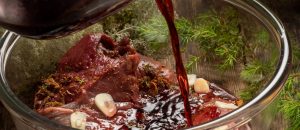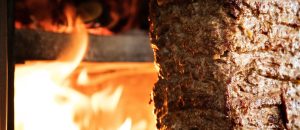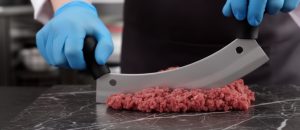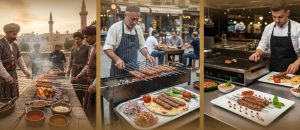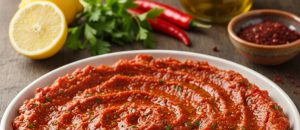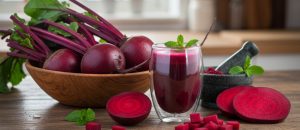The remarkable tenderness, concentrated flavors, and succulent juiciness of dishes like Testi Kebabı are not merely the result of patience, but a profound demonstration of culinary science at work. The seemingly simple act of slow-cooking ingredients in a sealed clay pot orchestrates a symphony of thermodynamic and chemical processes that defy conventional open-pot cooking. This in-depth article, a vital Cluster Content piece supporting our “Testi Kebabı: Anatolia’s Clay Pot Culinary Secret and Dance with Fire” Pillar Page, will delve into the scientific principles behind these transformations. For food scientists, culinary historians, and ambitious home chefs, we will explore the critical roles of steam pressure, moisture retention, the molecular magic of collagen gelatinization, and the nuanced Maillard reactions that occur in a contained environment. Join us as we unravel the unseen science that turns humble ingredients into a melt-in-your-mouth masterpiece, proving that Testi Kebabı is a true masterclass in culinary thermodynamics.
The Magic of the Pot: Unveiling the Science of Slow, Sealed Cooking
Slow cooking in a sealed pot, exemplified by Testi Kebabı, is a highly effective culinary technique that leverages fundamental scientific principles to achieve superior tenderness, enhanced flavor, and optimal moisture retention. The confined environment creates a unique microclimate for food transformation.
Beyond Simple Stewing: A Symphony of Thermodynamics and Chemistry
Cooking in a sealed pot goes beyond simple stewing, orchestrating a complex interplay of physical (thermodynamics) and chemical processes.
- Thermodynamics: The sealed nature of the pot (often clay) creates a contained system where heat energy is efficiently transferred and retained. This leads to stable and prolonged cooking temperatures.
- Steam Pressure: As liquids in the food heat up, they turn into steam. Because the pot is sealed, this steam cannot easily escape, leading to a slight build-up of pressure inside. This pressure has several significant culinary benefits.
- Chemical Reactions: The sustained heat and moisture facilitate critical chemical reactions, such as the Maillard reaction (for subtle browning) and the hydrolysis of collagen into gelatin (for tenderness), at optimal rates.
- Flavor Dynamics: The sealed environment prevents the escape of volatile aromatic compounds, allowing flavors to concentrate and meld deeply, resulting in a richer and more harmonious taste profile.
- Unique Environment: This combination of stable temperature, elevated pressure, and high humidity creates a unique cooking environment that is ideal for transforming tough ingredients into incredibly succulent dishes.
Our Scientific Lens: Decoding Testi Kebabı’s Culinary Secrets
This article will apply a scientific lens to decode the culinary secrets of Testi Kebabı, revealing the molecular and physical mechanisms behind its acclaimed qualities.
- Pressure’s Role: We will explain how the build-up of steam pressure influences cooking speed and flavor infusion.
- Moisture Management: The methods by which sealed pots prevent dryness and maintain juiciness will be explored.
- Tenderness Transformation: We will detail the chemical process of collagen gelatinization, the key to melt-in-your-mouth texture.
- Flavor Chemistry: The subtle Maillard reactions and flavor concentration in a high-moisture, sealed environment will be analyzed.
- Nutritional Aspects: Potential benefits for nutrient retention and food safety will also be discussed.
The Role of Pressure: Steam Dynamics in a Sealed Environment
The slight pressure build-up within a sealed cooking pot, a defining characteristic of Testi Kebabı, significantly alters the cooking dynamics, leading to faster cooking times and enhanced ingredient transformations. This phenomenon is a fundamental principle of pressure cooking, albeit at a milder level than dedicated pressure cookers.
Pressure Build-up: Increasing Boiling Point and Accelerating Cooking
When a pot is sealed, the steam generated by heating the liquids inside cannot escape, leading to an increase in internal pressure, which in turn elevates the boiling point of water.
- Elevated Boiling Point: Under normal atmospheric pressure, water boils at 100°C (212°F). In a sealed environment, as steam accumulates, the pressure inside the pot increases. This increased pressure forces water to remain liquid at higher temperatures before it boils. For instance, even a slight pressure increase can raise the boiling point to 105-110°C (221-230°F).
- Accelerated Cooking: Cooking at these slightly higher temperatures significantly accelerates the cooking process. Chemical reactions (like protein denaturation and collagen breakdown) occur faster at higher temperatures. This means meat and vegetables can cook through more quickly while remaining tender.
- Energy Efficiency: By trapping steam and increasing internal temperatures, sealed pot cooking becomes more energy-efficient, as less heat escapes, and cooking times are reduced compared to open-pot stewing at the same external heat.
Enhanced Flavor Infusion and Moisture Penetration
The pressurized, steam-rich environment inside a sealed pot facilitates deeper flavor infusion and more efficient moisture penetration into the ingredients.
- Driving Flavors In: The elevated pressure can subtly force moisture (and dissolved flavor compounds) into the cells and fibers of the meat and vegetables. This leads to a more thorough and even distribution of flavors throughout the ingredients, rather than just on the surface.
- Steam as a Flavor Carrier: The constant circulation of hot, flavorful steam within the sealed pot acts as a powerful carrier for aromatic compounds. These compounds are continuously re-deposited onto the food, intensifying the overall taste.
- Moisture Penetration: The high humidity and slight pressure help water molecules penetrate tough cell walls and muscle fibers more effectively. This is particularly beneficial for rehydrating dried ingredients (if used) or ensuring that dense vegetables and meats become uniformly tender.
- Concentrated Aromas: Because volatile aromas cannot escape, they are recirculated within the pot, becoming intensely concentrated in the final dish. This results in a much richer, more complex aromatic profile than open-pot cooking, where these compounds are lost to the air.
Moisture Retention: Preventing Dryness and Achieving Juiciness
A cornerstone of Testi Kebabı’s acclaimed tenderness and succulence is its remarkable ability to retain moisture throughout the slow cooking process. This is achieved through a combination of the sealed environment, the self-basting action of steam, and the inherent properties of the clay pot itself, all working in concert to prevent dryness.
Self-Basting with Steam: The Continuous Hydration Cycle
The sealed nature of the clay pot creates a continuous hydration cycle, where steam actively self-bastes the ingredients, ensuring they remain incredibly juicy.
- Vaporization and Condensation: As the ingredients heat up, their natural moisture (and any added liquids) vaporizes into steam. Because the pot is sealed, this steam cannot escape. Instead, it rises to the cooler inner surfaces of the lid and pot walls, where it condenses back into liquid.
- Constant Dripping: This condensed moisture then drips back down onto the food, creating a continuous self-basting process. The meat and vegetables are constantly bathed in a flavorful liquid that keeps them hydrated.
- Even Moisture Distribution: This self-basting ensures that all ingredients, even those not fully submerged in liquid, receive consistent moisture, preventing any part from drying out. This is a significant advantage over open-pot cooking, where moisture rapidly escapes.
- Flavorful Liquid: The basting liquid is not just water; it’s a concentration of the juices released by the meat and vegetables, infused with spices. This re-circulated, flavorful liquid further tenderizes and flavors the food, contributing to the deep, harmonious taste of Testi Kebabı.
Clay’s Porosity and Thermal Insulation: Key to Even Moisture
The physical properties of the clay pot itself, specifically its porosity and thermal insulation capabilities, play a crucial role in regulating moisture and ensuring even cooking.
- Porosity (for unglazed pots): Unglazed clay is porous. When soaked in water before use, it absorbs water. During cooking, this absorbed water slowly releases as steam, contributing to the humid environment inside the pot. This slow, controlled release of steam helps maintain consistent moisture levels without making the food waterlogged.
- Thermal Insulation: Clay is an excellent insulator. It heats up slowly but, crucially, retains heat exceptionally well and distributes it very evenly. This even heat distribution throughout the pot prevents hot spots that could cause localized drying or burning.
- Gentle Cooking: The insulating property means the food cooks gently and gradually. This slower, more uniform heat allows collagen (tough connective tissue) ample time to break down into gelatin (which is tender and moist), while minimizing the excessive shrinking of muscle fibers that leads to dryness.
- Temperature Stability: In traditional stone or tandır ovens, the clay pot’s insulation complements the oven’s stable temperatures, creating an ideal environment for long, moist-heat cooking that maximizes juiciness and tenderness.
Collagen Gelatinization: The Secret to Melt-in-Your-Mouth Tenderness
The unparalleled, melt-in-your-mouth tenderness of Testi Kebabı is a direct result of a crucial chemical transformation known as collagen gelatinization, a process optimally facilitated by slow, moist-heat cooking in a sealed pot. This molecular magic converts tough connective tissues into succulent, slippery gelatin.
Breaking Down Tough Connective Tissues into Succulent Gelatin
Meat, especially tougher cuts often used in stews, contains significant amounts of collagen, a fibrous protein that contributes to its chewiness. Slow, moist cooking is the key to transforming this collagen.
- Collagen Structure: Collagen is a triple-helix protein found in connective tissues, tendons, and ligaments. In its raw form, it is very tough and difficult to chew.
- Hydrolysis: When collagen is exposed to moist heat for an extended period (typically above 60°C or 140°F), it undergoes hydrolysis. This is a chemical reaction where water molecules break down the protein’s bonds.
- Gelatin Formation: This breakdown causes the collagen’s triple-helix structure to unwind and fragment, transforming it into gelatin. Gelatin is a much softer, almost jelly-like substance that gives slow-cooked meats their characteristic tenderness and rich mouthfeel.
- Enhanced Juiciness (Perceived): Gelatin is highly effective at binding water. As collagen converts to gelatin, it releases moisture and fat into the cooking liquid, which then gets reabsorbed by the meat or thickens the sauce. This significantly contributes to the perceived juiciness and richness of the dish.
- The Testi Advantage: The sealed clay pot environment, with its stable high temperature and abundance of steam, provides the perfect conditions for this gelatinization process, ensuring maximum collagen breakdown and an exceptionally tender Testi Kebabı.
Optimal Conditions: Time, Temperature, and Moisture for Transformation
Achieving optimal collagen gelatinization requires precise control over three interconnected factors: time, temperature, and moisture. Testi Kebabı’s cooking method inherently provides these ideal conditions.
- Time: Gelatinization is a time-dependent process. Tough cuts with more collagen require longer cooking durations (e.g., 2.5 to 4 hours or more) to allow sufficient time for the collagen to fully break down. Rushing the process will result in tough meat.
- Temperature: While collagen begins to break down at relatively low temperatures, it happens much more efficiently at sustained temperatures between 60°C and 80°C (140°F and 175°F). The steady, even heat provided by a clay pot in an oven (especially a traditional tandır or stone oven) is perfectly suited for this range.
- Moisture: Moisture is absolutely critical for gelatinization. Collagen requires water to undergo hydrolysis and transform into gelatin. The sealed environment of Testi Kebabı, which traps steam and creates a self-basting effect, ensures a consistently moist cooking environment, maximizing the conversion of collagen. Dry heat will only toughen collagen further.
- Synergy in Testi Kebabı: The combination of long cooking times, moderate and stable temperatures, and abundant moisture within the sealed clay pot creates the ideal scientific conditions for comprehensive collagen gelatinization. This synergy is the primary reason why Testi Kebabı achieves its remarkable, fall-apart tenderness, making tough cuts of meat incredibly palatable and delicious.
Flavor Concentration and Maillard Reactions in a Sealed Pot
Beyond texture, the sealed environment of clay pot cooking, as seen in Testi Kebabı, plays a pivotal role in concentrating flavors and enabling unique variations of the Maillard reaction, leading to a depth of taste often unparalleled in other cooking methods. This combination of trapped aromatics and subtle browning creates a rich and harmonious flavor profile.
Trapping Volatile Aromatics: Intensifying Taste
One of the most significant advantages of cooking in a sealed pot is the prevention of escape for volatile aromatic compounds, which dramatically intensifies the final flavor.
- Volatile Compounds: Many of the pleasant aromas and flavors in food come from volatile compounds (molecules that easily vaporize). In open-pot cooking, these compounds evaporate into the air and are lost.
- Recirculation: In a sealed pot, these volatile aromatics are trapped within the confined space. As they vaporize, they condense on the cooler surfaces of the lid and pot walls and then drip back into the food. This constant recirculation means that the flavor compounds remain within the dish.
- Flavor Concentration: Over the long cooking period, these trapped and recirculated aromatic compounds become highly concentrated in the cooking liquid and within the food itself. This leads to an incredibly rich, deep, and harmonious flavor profile where all ingredients have melded intimately.
- Enhanced Sensory Experience: When the Testi Kebabı pot is dramatically broken open at the table, the burst of concentrated aromas creates an immediate and powerful sensory experience, confirming the success of this flavor-trapping technology.
Maillard Under Moist Heat: Subtle Browning and Complex Flavors
While high-heat grilling is famous for its Maillard reaction, sealed pot cooking also enables this crucial browning reaction, albeit in a more subtle and nuanced way, contributing to complex flavors.
- Maillard Reaction Basics: The Maillard reaction is a complex chemical process between amino acids and reducing sugars that produces hundreds of new flavor compounds and a desirable brown color. It typically occurs at temperatures above 140°C (285°F).
- Challenges in Moist Environment: High moisture environments (like a sealed pot) generally inhibit aggressive surface browning because water must first evaporate before the surface temperature can reach the high thresholds required for a strong Maillard reaction.
- Subtle Browning: However, on the exposed surfaces of the meat and vegetables within the pot (especially those not fully submerged in liquid), areas can still reach sufficient temperatures for a subtle Maillard reaction to occur. This often creates light golden-brown hues and contributes to savory, roasted notes.
- Flavor Contribution: Even without an intense crust, these subtle Maillard reactions contribute significantly to the depth and complexity of the Testi Kebabı’s overall flavor profile. They add savory, umami-rich notes that meld with the concentrated aromas from the sealed environment.
- Caramelization: Sugars present in vegetables (like onions and carrots) and sometimes in marinades can also undergo caramelization (oxidation of sugars) under the sustained heat, adding sweet, nutty, and slightly bitter notes to the stew, further enhancing its flavor complexity. The overall result is a rich, deeply flavored dish with a nuanced aromatic profile, thanks to these controlled chemical transformations.
Nutritional Benefits and Food Safety of Sealed Pot Cooking
Beyond flavor and texture, the scientific characteristics of sealed pot cooking, such as those employed in Testi Kebabı, offer notable advantages in terms of nutrient preservation and food safety. This method can contribute to a healthier and more secure dining experience.
Preserving Vitamins and Minerals
The gentle, contained cooking environment of a sealed pot is highly effective at preserving water-soluble vitamins and heat-sensitive nutrients.
- Reduced Leaching: In open-pot boiling or stewing, many water-soluble vitamins (like Vitamin C and B vitamins) and minerals can leach out of the food into the cooking liquid, which is often discarded. In a sealed pot, this liquid (rich in nutrients) remains part of the dish, and often gets absorbed back into the food or consumed with the sauce.
- Minimized Oxidation: The limited exposure to oxygen in a sealed pot can help protect some heat-sensitive vitamins and antioxidants from oxidative degradation, which often occurs at high temperatures and in the presence of air.
- Lower Temperature Degradation: While cooking inevitably causes some nutrient loss, the typically lower and more stable temperatures used in slow, sealed cooking can be less aggressive on certain heat-sensitive nutrients compared to high-heat frying or prolonged boiling.
- Overall Retention: The overall effect is a higher retention of the intrinsic nutritional value of the meat and vegetables, making Testi Kebabı not only delicious but also a more nutrient-dense meal.
Enhancing Food Safety Through Sealed Environment
The sealed nature of the cooking vessel also provides inherent advantages for food safety, particularly concerning bacterial growth and cross-contamination.
- Pasteurization Effect: The sustained high temperatures within the sealed pot (especially if slightly pressurized) ensure that the food is cooked thoroughly, effectively pasteurizing the contents and killing most harmful bacteria, viruses, and parasites.
- Preventing Cross-Contamination: Once sealed and placed in the oven, the food is completely protected from external contaminants (e.g., airborne bacteria, flies, unwashed hands) until it is broken open for serving. This significantly reduces the risk of cross-contamination during the cooking process.
- Controlled Environment: The controlled and consistent temperature inside the pot, combined with the absence of oxygen for aerobic bacteria, creates an environment less conducive to the growth of spoilage microorganisms compared to open-air cooking.
- Post-Cooking Safety (if kept sealed): While Testi Kebabı is usually consumed immediately, if kept sealed and hot, its internal temperature remains safe for longer periods, provided the seal is intact. This makes it a robust method for preparing safe, delicious meals.
Testi Kebabı – A Masterclass in Culinary Thermodynamics
Our scientific deep dive into “Slow Cooking Science: Pressure, Moisture, and Tenderness in a Sealed Pot” unequivocally demonstrates that Testi Kebabı is a profound masterpiece of culinary thermodynamics and chemistry. We’ve illuminated the critical roles of steam pressure, which elevates boiling points and accelerates cooking, and the ingenious self-basting cycle that continuously hydrates ingredients, ensuring remarkable juiciness. The molecular magic of collagen gelatinization, breaking down tough connective tissues into succulent gelatin through optimal time, temperature, and moisture, is the very secret to its melt-in-your-mouth tenderness. Furthermore, the sealed environment not only intensely concentrates flavors by trapping volatile aromatics but also enables subtle yet crucial Maillard reactions for complex taste profiles. Beyond its sensory delights, this ancient art offers significant nutritional benefits by preserving vitamins and minerals, and enhances food safety. Testi Kebabı stands as a timeless testament to human ingenuity, proving that the most delicious traditions are often those most deeply rooted in scientific principles, delivering a symphony of flavor, texture, and aroma from the heart of Anatolia.









